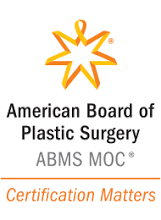Manual Vs Robotic Hair Restoration
If you’re dealing with hair loss, you’re probably looking for the very best options there are for hair restoration. What is the best way to not only stop hair loss, but to restore a full, thick head of hair?
There are a number of topical treatments, medications, and non-invasive options that can help when it comes to hair restoration. These can be used to a very positive effect. However, they are designed to thicken and prolong the life of your existing hairs. Unfortunately, once a hair follicle dies completely, what these treatments can’t provide is new hairs in their place.
In order to start growing new hairs where bald or severely thinning places are on your head, there is a specific type of hair restoration that transfers healthy, active hair follicles from a more dense part of your scalp to the bald or thinning area. This type of hair restoration is called follicular-unit extraction (FUE). There are two ways this effective hair restoration treatment can be performed–one type of treatment is manual and the other type is robotic.
Manual hair restoration
Manual hair restoration is done by the hand of your surgeon. This can be very challenging for a surgeon, especially if you have significant hair loss and need thousands of individual hair grafts. The human element–namely surgeon fatigue, can come into play when it comes to your final results. This can affect even the most highly trained, skilled and experienced surgeons. You may still get outstanding results, but there is a risk factor involved.
During manual extraction, there is also a risk of damaging some existing hair follicles nearby the transplant area, and also during the transplant.
Robotic hair transplantation
During robotic hair restoration with ARTAS Robotic Hair Restoration, there is no concern or risk when it comes to human factors such as fatigue. Robotic hair restoration provides outstanding results with every single hair follicle, from the very first to the thousandth after thousandth.
ARTAS also uses state-of-the-art imaging systems and algorithms to calculate the hair density in each area of your scalp, the ideal number and quality of hair grafts from the donor area, and the optimal distribution of hair grafts. This ensures that both the donor area and the recipient area look full, healthy and thick after your treatment is complete.
Additionally, robotic hair restoration carries no risk of damaging nearby hair follicles in the donor site.
Which is best?
While you can achieve excellent results with a manual hair transplant procedure performed by an experienced specialist, there is more certainty and consistency in the results achieved with robotic hair transplantation. Do keep in mind that ARTAS requires a skilled, experienced expert in hair restoration in order to achieve your goals successfully.
The Center for Hair Restoration at Premier Plastic Surgery
If you are ready to take charge and restore your full, thick head of head, we can help. At the Center for Hair Restoration, relax in our comfortable, friendly environment and professional, highly trained and friendly staff. Our licensed physician assistants are all specially trained by board-certified, renowned plastic surgeon, Dr. Heil, who specializes in hair restoration. He is known as one of the top hair transplant surgeons Pittsburgh has to offer.















